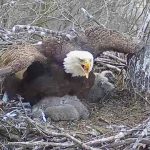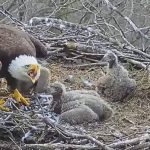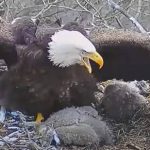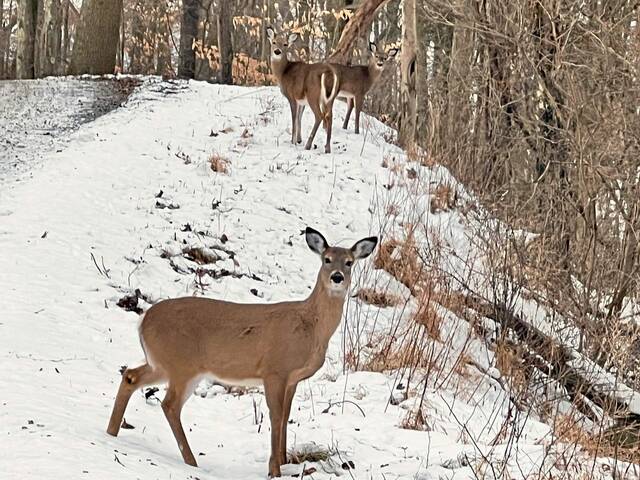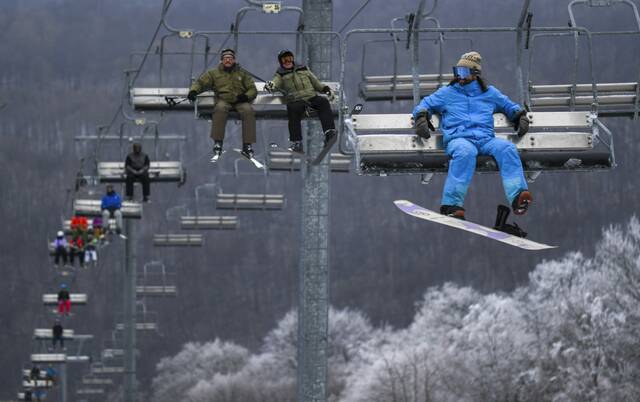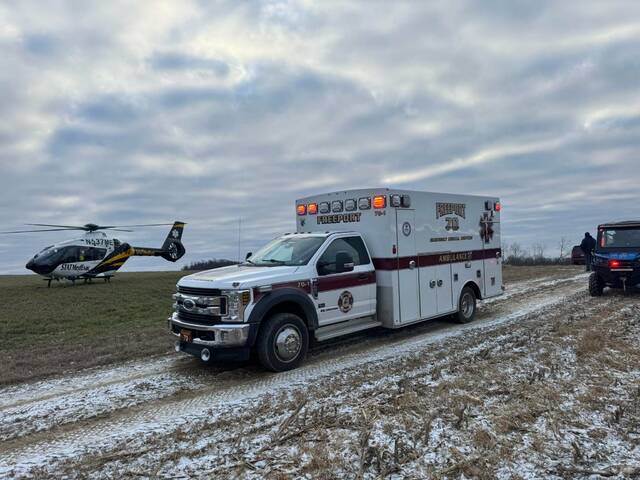Dining on a meal of Monongahela fish just after 6 p.m., the Pittsburgh Hays bald eagle mom fed her three eaglets.
Then — bam!
A large predatory bird swooped the nest and the Hays’ mom sprang into action. She outstretched her wings, which can span six feet or more, over her three eaglets to protect them.
This is not new to the Hays eagles, which have had to fight off intruders to their nest and territory monthly. In February, there were two recorded intrusions by other bald eagles, according to PixCams, the Murrysville company that works with the Audubon Society of Western Pennsylvania to offer the live webcam.
On Wednesday, the female shouted alarm calls for several minutes at the unidentified intruder, according to PixCams. The male responded to her calls as he was on his way to the nest with a fish.
Upon arrival at the nest, the male dropped the fish and quickly took off after the intruder bird. Then the eagle family resumed their dinner, according to PixCams footage.
“This was an amazing sight to witness,” said Bill Powers, PixCams president. “It was inspiring to watch nature defend a family in that manner.”
Although the latest intruder to the Hays bald eagle’s territory could not be identified on camera, most of the unwanted visitors have been other eagles. Bald eagles don’t start to breed until they reach the age of 4 or 5. Younger eagles, known as “floaters,” often roam, looking for food and, eventually, a territory to claim.
The number of floaters has been on the rise as the eagle population has increased. These birds are checking out other eagle nests and bald eagle territories, according to Zoey Greenberg, a raptor ecologist, in her article “Intruder Events” for the Pennsylvania Game Commission and the webcam company HDOnTap.
The number of eagle nest intrusion events has been on the rise in the Chesapeake Bay area, where the numbers of floaters have increased five-fold between 1990 and 2013, she said.
“Defensive nest behaviors range from attacking and chasing, circling the nest, perching nearby as a precaution or vocalizing,” Greenberg said. The eagles also will posture with extended necks, raised hackles, crouching and raising wings, she said.
To watch the nest action at the Hays bald eagle nest, visit the websites of PixCams and the Audubon Society of Western Pennsylvania.
To access other eagle webcams in the state and learn more about bald eagles, visit the Pennsylvania Game Commission’s website.





